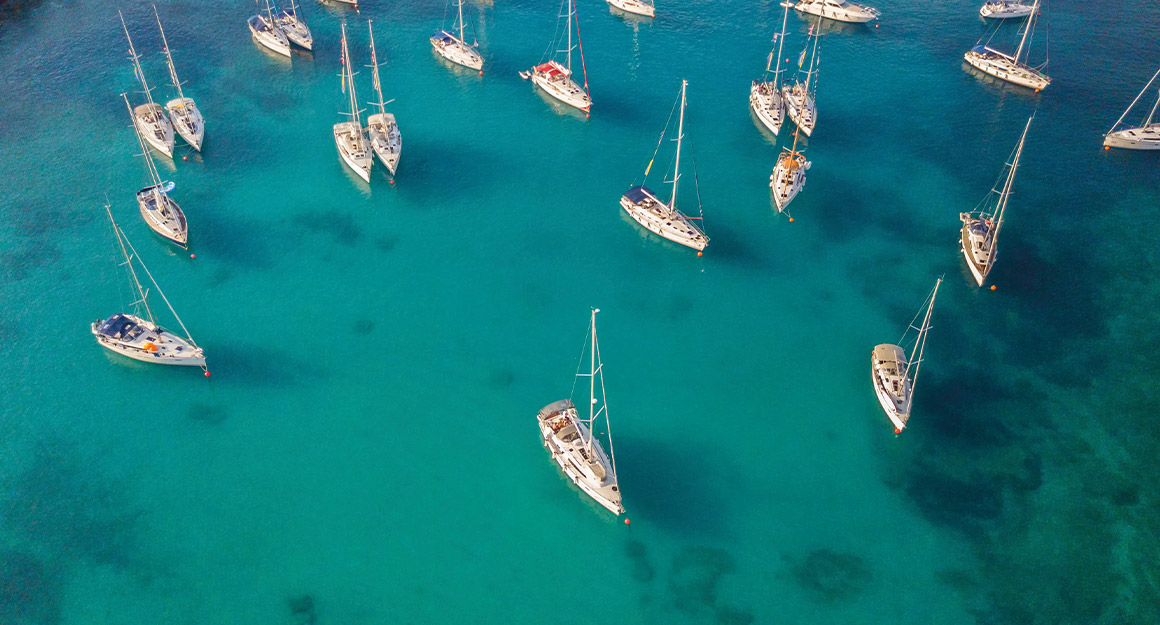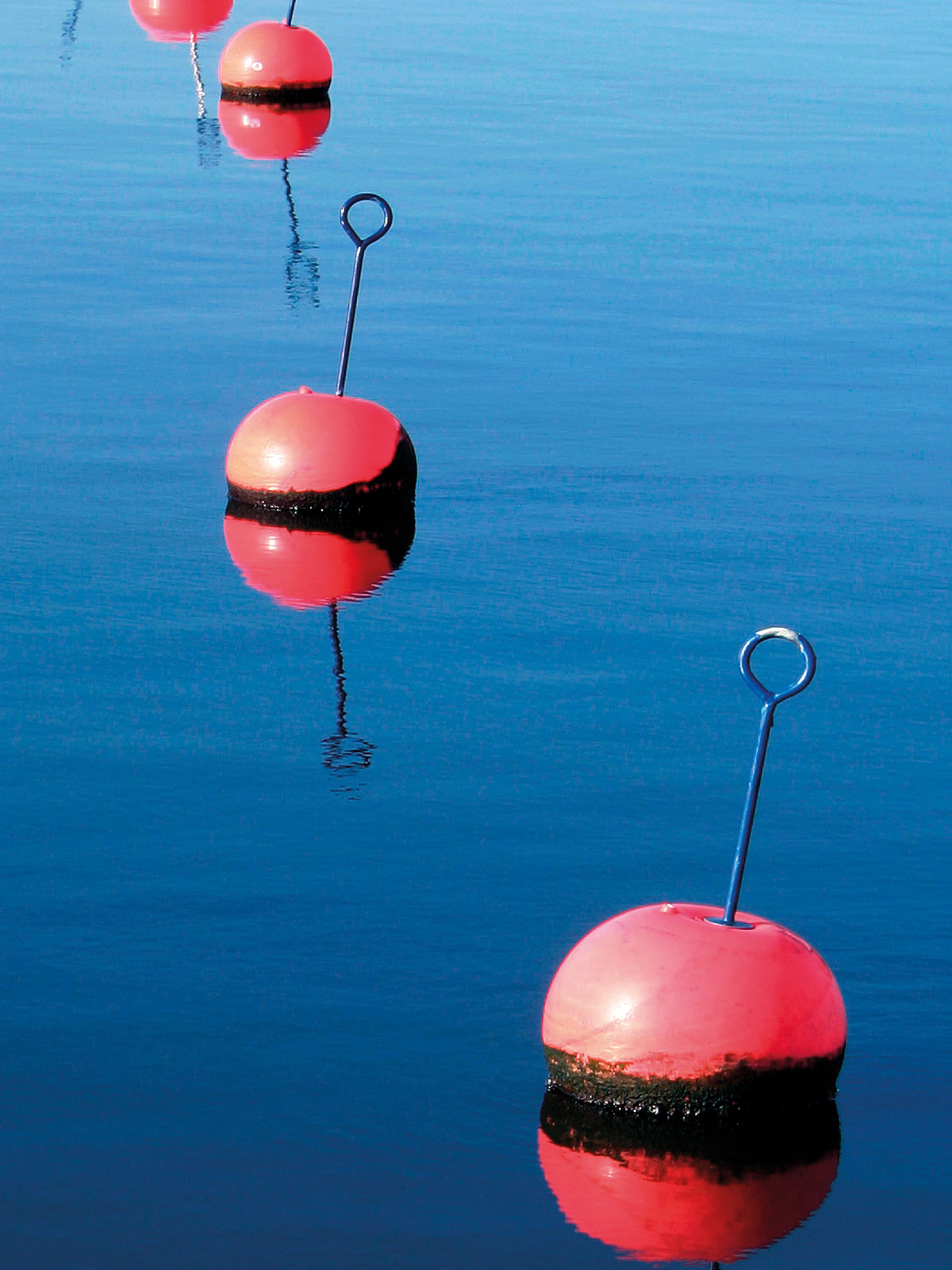Buoy instead of anchor
In many areas, bays suitable for anchoring are now converted into a buoy field to protect the underwater flora. This saves the process of anchoring, but even a buoy field has its challenges.
The projects to protect the Posidonia vegetation, such as on the Balearic Islands, in Croatia or in southern France, prohibit free anchoring in particularly popular bathing bays. Instead, you can moor at a buoy for a fee. You can find information on this in nautical charts, sailing guides or on specialised websites. Nowadays, you can even make reservations via the Internet. Or if you’re lucky, you can just grab a mooring buoy if there’s no marinero around.
If the buoys are of different colours, this indicates that they have different holding power – so choose a buoy that fits the size of your boat.
Rule of thumb: the inner buoys of a bay are usually for smaller boats, the outer ones for larger yachts.

Approaching the bouy – bow-to or stern-to
The easiest way is to approach the buoy with the stern – especially if there is wind. In this case the boat is stabilised by the wind. In addition, the helmsman always has the buoy in sight, and mooring to the buoy from the bathing platform is very easy, even on a catamaran:
- A stern line is made ready and a long bow line is brought aft along the outside of the railing.
- Stop the boat near the buoy, put it in neutral and tie the stern line to the ring on the buoy pole.
- Then pull the bow line through at the base of the buoy. Slowly loosen the stern line and bring the bow line back to the bow while the boat gradually turns into the wind.
- Take the bow line in tight and preferably put the second line onto a free cleat.
The mooring lines should be long enough so that the boat and buoy do not touch each other at night. If the buoy is constantly knocking against the side of the boat, the only solution is to pay out more line. Or to attach two fenders across the bow.
If there is little or no wind, you can approach the buoy forwards. It is important that the person at the bow reports the distance and direction to the buoy to the helmsman, because in the last few metres the buoy becomes invisible to him. One person alone at the bow will not have enough hands to hold the boat hook and line, and then be able to pull up the buoy, which is usually heavy due to the weight of the chain, far enough to guide the line through the ring. If several crew members want to do this, the space in the pulpit is usually very tight. It is more advisable to pick up the buoy alongside.
Another trick is to catch the buoy with a large loop like a lasso. Once you have pulled the buoy in tight, you have all the time in the world to set the lines up correctly.


Buoy Check
When you are secure, check the buoy. Is it really a mooring buoy? Or have we foolishly caught a marker or private buoy?
If it is the right buoy, what condition is it in? As with the anchor check, a dive can’t hurt here either. How is the buoy anchored to the bottom? What does its chain look like? This quick check is worthwhile.
Who wants to be stuck with a poorly maintained buoy when the mistral or bora is blowing?